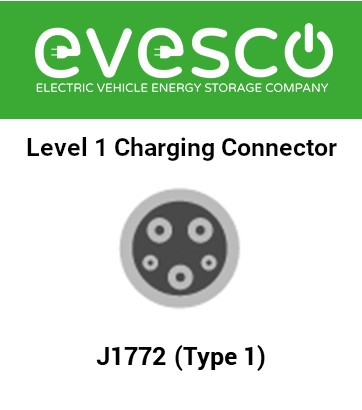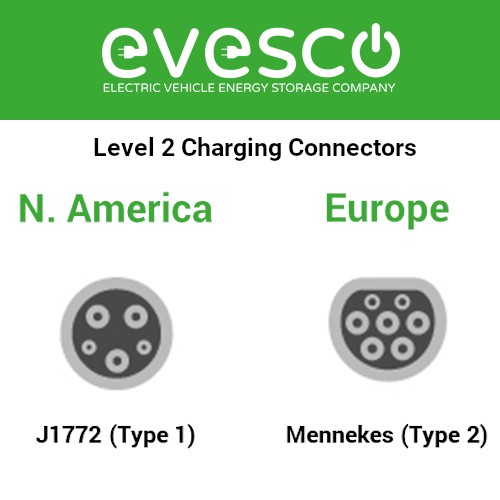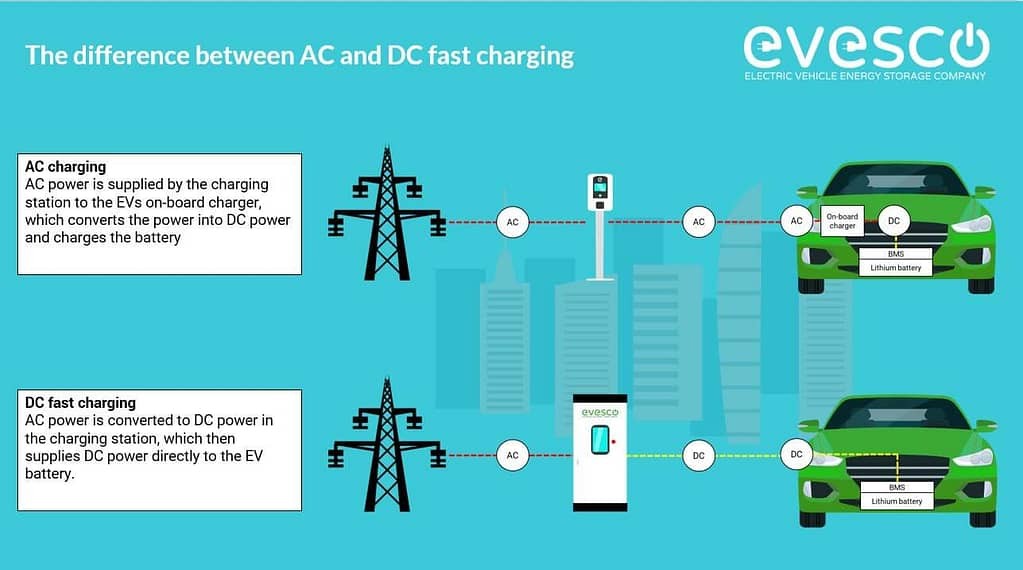The electric vehicle (EV) revolution is not just on the horizon; it’s happening now. EV adoption is surging, outpacing expert predictions thanks to a confluence of factors: attractive government incentives, a wider variety of EV models hitting the market, substantial investments in both public and private EV infrastructure, and a growing societal push towards sustainable transportation. This shift towards cleaner vehicles is crucial in our collective effort to reduce harmful emissions and build a greener future.
As electric vehicles become increasingly commonplace, understanding the nuances of EV charging is more important than ever. Specifically, knowing the different Ev Charger Levels and their implications for charging speed and Electric Vehicle Supply Equipment (EVSE) is essential for every EV owner and prospective buyer.
There are three primary ev charger levels that categorize the speed and power output of EV charging stations: Level 1, Level 2, and Level 3, also known as DC Fast Charging. While each level serves the same fundamental purpose – to replenish your EV battery – they differ significantly in power delivery and, consequently, charging time. Generally speaking, as you move up in ev charger levels, the power output increases, leading to faster charging speeds. Let’s delve into each level to understand their characteristics, benefits, and ideal use cases.
Level 1 Charging: The Slowest, Most Accessible Option
Level 1 ev charger levels represent the most basic and readily available form of EV charging. It utilizes a standard 120-volt Alternating Current (AC) household outlet, delivering power in the range of 1 kilowatt (kW) to 1.8 kW. This type of charging is standard in North America, employing a common 3-prong household plug on one end and a J1772 (Type 1) connector on the other, which interfaces with the electric vehicle. It’s worth noting that Level 1 charging isn’t a viable option in Europe due to the standard residential electricity voltage being 230-volt.
Level 1 Charging Speed and Practicality
Level 1 is indeed the slowest among the electric car charging levels. Charging a standard Battery Electric Vehicle (BEV) from empty to full using a Level 1 charger can be a lengthy process, typically ranging from 22 to 40 hours. In terms of range, an hour of Level 1 charging will add approximately 3 to 7 miles (4 to 11 kilometers) to your EV’s battery.
The primary advantage of Level 1 charging is its ubiquity. Every BEV and Plug-in Hybrid Electric Vehicle (PHEV) is compatible with Level 1 charging, and crucially, Level 1 chargers are usually included as standard equipment when you purchase an EV. This makes it an incredibly convenient backup charging solution.
However, due to its slow charging speed, Level 1 ev charger levels are primarily relegated to home use as a supplemental or “trickle” charger. It’s also practical as a backup when faster Level 2 or Level 3 charging stations are not accessible. Outside of home charging, relying solely on Level 1 charging is generally impractical for most EV drivers given the extended time required to add a meaningful amount of range.
| EV Charging Level | Connector Type | Typical Output Power | Estimated Charge Time (40kWh Battery) | Estimated Range Per Hour Charging | Typical Use Case |
|---|---|---|---|---|---|
| Level 1 | J1772 (Type 1) | 1 kW – 1.8 kW | 22 – 40 hours | 3 – 7 miles (4 – 11 kilometers) | Home Charging, Backup Charging |



Level 2 Charging: A Faster, More Versatile Solution
Level 2 ev charger levels offer a significant step up in charging speed compared to Level 1. In North America, Level 2 charging utilizes a 208-volt to 240-volt AC outlet, while in Europe, it employs a 230-volt (single-phase) or 400-volt (three-phase) outlet. The power output for Level 2 chargers in North America can reach up to 19.2 kW (80A), whereas in Europe, it can go as high as 22 kW.
Level 2 chargers are also more feature-rich than their Level 1 counterparts. Many come equipped with advanced functionalities such as RFID card readers for access control, load balancing to optimize power distribution, and Open Charge Point Protocol (OCCP) networking for integration into charging networks and management systems.
Connector types for Level 2 charging vary by region. North America and Japan primarily use the J1772 (Type 1) connector, while Europe has standardized on the Mennekes (Type 2) connector. Level 2 charging stations are available in both tethered configurations (with a charging cable permanently attached) and untethered options (featuring a socket where you plug in your own compatible charging cable).
Currently, Level 2 ev charger levels are the most prevalent type of EV charging infrastructure globally, forming the backbone of public and private charging networks. While Level 3 charger deployment is rapidly increasing, Level 2 remains the workhorse for everyday EV charging needs.
Level 2 Charging Speed and Applications
A Level 2 charger can be substantially faster than a Level 1 charger – up to 19 times faster, depending on the charger’s power output and the EV’s charge acceptance rate. On average, an hour of charging with a Level 2 charger can add between 10 to 75 miles (16 to 120 kilometers) of driving range to an electric vehicle. This variability depends on the vehicle’s battery capacity and charging capabilities.
Level 2 charging is the go-to solution for a wide range of locations. It’s the most common type found at public charging stations and is also frequently installed in residential settings, workplaces, hotels, shopping centers, and supermarkets. Level 2 ev charger levels are ideally suited for overnight home charging, topping up during the workday, or while parked at destinations for extended periods.
| EV Charging Level | Connector Type | Typical Output Power | Estimated Charge Time (40kWh Battery) | Estimated Range Per Hour Charging | Typical Use Case |
|---|---|---|---|---|---|
| Level 2 | J1772 (North America), Mennekes (Europe) | 3 kW – 22 kW | 2 – 13 hours | 10 – 75 miles (16 – 120 kilometers) | Home, Workplace, Public Charging Stations, Hotels, Overnight Charging |
Both Level 1 and Level 2 ev charger levels are categorized as AC-type EV chargers. Before exploring Level 3 charging, it’s crucial to understand the fundamental distinction between AC and DC EV charging.
AC vs. DC EV Charging: Direct vs. Alternating Current
The world of electricity operates with two primary types of current: Alternating Current (AC) and Direct Current (DC). The electrical grid that powers our homes and businesses delivers AC power. However, electric vehicle batteries store energy in the form of DC power. The core difference between AC and DC ev charger levels lies in where the conversion from AC to DC power occurs.
With AC charging (Level 1 and Level 2), the incoming AC power from the grid is converted to DC power within the electric vehicle itself, using an on-board charger. This on-board conversion process can be relatively time-consuming and is limited by the capacity of the vehicle’s on-board charger.
In contrast, DC charging (Level 3) shifts the AC-to-DC power conversion process to the charging station. The DC fast charger converts AC power to DC power before it reaches the vehicle, delivering DC power directly to the battery. This bypasses the limitations of the EV’s on-board charger, enabling a much higher rate of power delivery and significantly faster charging times. This fundamental difference in power conversion is what makes DC ev charger levels so much faster than AC charging.
Level 3 Charging: DC Fast Charging for Rapid Refueling
Level 3 ev charger levels, also known as DC Fast Charging (DCFC), represent the pinnacle of EV charging speed currently available to the public. DC fast chargers are engineered to provide the quickest and most powerful EV charging experience on the market today. Level 3 charging stations utilize a three-phase power supply, typically 480-volt in North America and 400-volt in Europe, with some of the most advanced chargers capable of outputting power exceeding 360 kW.
Similar to Level 2 chargers, Level 3 charging stations often incorporate sophisticated features, including dynamic power distribution to optimize charging across multiple vehicles, multi-charging protocol cables to accommodate various EV connector types, and network connectivity via OCPP for seamless integration into charging infrastructure networks. Level 3 chargers are available in both stationary, permanent installations and portable configurations for mobile charging needs.
Connector standards for Level 3 ev charger levels include CCS (Combined Charging System) connectors (CCS 1 in North America and CCS 2 in Europe), CHAdeMO (primarily used by Japanese automakers), and Tesla Superchargers (now officially called NACS – North American Charging Standard). The evolving landscape of EV charging connectors is something to keep in mind as the industry progresses.
While the term “Level 3 charging” is widely used in the industry to encompass all levels of DC fast charging, it’s worth noting that technically, the original definition of Level 3 charging referred to charging power levels above 400 kW. However, in common usage, Level 3 and DC Fast Charging are now used interchangeably for high-power DC charging.
Level 3 Charging Speed and Strategic Deployment
As highlighted earlier, Level 3 chargers perform the AC-to-DC conversion within the charging station itself, enabling a much faster and more direct power delivery pathway to the EV battery. This results in significantly reduced charging times. A Level 3 charger can potentially fully charge a standard electric car in under 20 minutes, although the actual charging time will depend on the vehicle’s battery capacity and its charge acceptance rate (the maximum rate at which the battery can safely receive power).
Due to their rapid charging capabilities, Level 3 ev charger levels are strategically deployed in locations where speed and convenience are paramount. They are commonly found at public service stations along highways, making them indispensable for long-distance EV travel. Beyond highway corridors, Level 3 charging is becoming increasingly critical in other sectors, including EV fleet charging for commercial operations, automotive dealerships to support sales and service, and any location where vehicles require quick turnarounds, such as delivery vehicle depots, logistics hubs, and distribution centers. Essentially, Level 3 charging is ideal for scenarios where drivers need to replenish a significant amount of range in a short timeframe.
| EV Charging Level | Connector Type | Typical Output Power | Estimated Charge Time (40kWh Battery) | Estimated Range Per Hour Charging | Typical Use Case |
|---|---|---|---|---|---|
| Level 3 | CCS 1 (North America), CCS 2 (Europe), CHAdeMO (Japan), NACS (Tesla) | 30 kW – 360 kW+ | 15 mins – 1.5 hours* (depending on charge acceptance rate) | 120 – 1400+ miles (193 – 2250+ kilometers) | Highway Service Stations, EV Fleets, Car Dealerships, Logistics Hubs, Distribution Centers, Rapid Charging Needs |
Alt text: DC fast charging station showcasing its high-power capabilities for electric vehicles, emphasizing rapid charging for long journeys and commercial applications.
In conclusion, understanding the differences between ev charger levels is crucial for navigating the world of electric vehicle ownership and infrastructure. From the convenience of Level 1 home charging to the rapid refueling offered by Level 3 DC fast chargers, each level plays a vital role in supporting the growing EV ecosystem. Choosing the right charging level depends on your individual needs, driving habits, and access to charging infrastructure. As EV technology and infrastructure continue to advance, we can expect even more innovation and accessibility in the realm of electric vehicle charging.